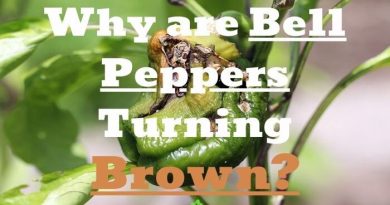Clematis Leaves Turning Yellow: 5 Causes And Solutions
Everyone loves clematis, these perennial climbers with spectacular blooms drive everyone crazy. But often you can see clematis leaves turning yellow. This issue is a symptom of many problems that need to be eliminated as soon as possible.
| Why are Clematis leaves turning yellow: |
|---|
| 1. Waterlogging |
| 2. Improper care |
| 3. Lack of nutrients |
| 4. Diseases |
| 5. Pests |
1. Waterlogging
Waterlogging or overwatering is one of the most common reasons why clematis leaves are turning yellow.
This waterlogging will lead to root rot which in turn will prevent the nutrients to reach the leaves and as a consequence the leaves will start to turn yellow and which will kill off your plant completely if left untreated.
We need to keep in mind that Clematis does not require as much water as some other plants do. Clematis should not be allowed to sit in water without being watered first because it will lead to a shriveled-up plant with no flowers.
To avoid this problem all together, make sure that you give them enough water but also don’t let them get too wet either.
If they do then they may begin rotting away from the root system causing everything else around them, including leaves to die off.
Watering is the most important thing you can do to keep your clematis healthy. It’s true that some plants need more water than others, but it is also true that some types of plants need less water than others.
Treatment
When watering your clematis, make sure to do so deeply enough so that the soil sits evenly and doesn’t dry out too quickly.
Clematis watering rules: from 10 to 40 liters of water per 1 bush, depending on the age and size of the plant. The recommended frequency of watering is 1 time per week, during periods of drought, 2-3 times a week. The soil moisture should reach a depth of 50-70 cm.
If you don’t provide enough moisture then your plant will suffer from a lack of nutrients which causes yellowing leaves and stunting growth in its roots (which results from poor root development).
2. Improper care
If clematis leaves start turning yellow, this is often the flower response to improper care and we need to make sure that no big mistakes were made when planting or caring for the clematis.
These are the clematis care points we should take into account:
Water Deficiency
Water deficiency leads to the fact that the leaves of the clematis do not receive enough nutrients, as a result of which they dry, wither or turn yellow.
Clematis is resistant to drought, but a prolonged period with a lack of water will have severe consequences: first, the bottom leaves will turn yellow. Leaf tips will begin to dry and fall.
In this scenario, you should water until water runs out of the drainage holes. However, remember that it should be a little, if too much water comes out, you have put in too much.
If you notice after watering that a crust from on top of the soil you must loosen the soil to allow the moisture and oxygen to reach the root of the clematis.
In order for your clematis to thrive, it needs lots of water plus plenty of nutrients in its soil mix.
If you’re growing your clematis indoors or outdoors in a pot, there will be some leaching out into the drainage hole where excess water drains away from the roots; this can lead to root rot if not corrected soon enough!
Unsuitable Soil
Yellow leaves on clematis are also a sign of unsuitable soil type : sandy soil or clay soil. Clematis require a well-drained soil with neutral acidity (pH).
The insufficiently good permeability of the soil in the area makes it difficult for oxygen and minerals to reach the roots of clematis. As a result, the clematis leaves turn yellow, dry out and fall off. The flower takes root well in permeable, non-acidic soil.
To improve the soil you need to start mulching (applying a protective layer of material to the surface of the soil above the root system of the clematis flower).
It is useful to plant marigolds, phloxes or peonies next to clematis bushes. Such a neighborhood, together with mulching the soil, prevents overheating of the root system of the plant.
Presence of Weeds
Weeds present in the root zone of clematis take most of the nutrients from the soil and prevent oxygen exchange, thus clematis strangled by weeds may well begin to turn yellow and dry.
So it is necessary to remove weeds from the root zone of clematis.
Crowded plants
When clematis are planted too close together, the roots cannot grow enough and a poor root system will not provide the necessary nutrients and water to the flower. And in this case the clematis will quickly turn yellow, and after a while will dry and fall.
Another issue that’s causing yellow leaves are too close roots to the soil surface.
This will lead to part of the root to be exposed to the environment which will affect the clematis health. Unprotected roots will begin to dry out and the crown will lack nutrition.
Treatment
Improper care can be treated using the following steps:
- Water the clematis only when the soil is dry.
- Avoid to crowd an area with many plants.
- Test the soil type and acidity (pH).
- Regularly perform weeding and loosening of the soil.
3. Lack of nutrients
If your clematis flower is suffering from a lack of nutrients, the symptoms will be yellowing and wilting of the leaves. Nutrient deficiency occurs during the growing season when the clematis needs lots of these nutrients to develop.
Nutrients are essential to all plants, as they provide energy and help make up the structures that allow them to grow and reproduce.
Cultivated clematis needs top dressing. Clematis turns yellow with a deficiency of zinc, magnesium, iron, manganese or nitrogen. Throughout its active development, the plant needs to be fed with complex mineral fertilizers.
Clematis requires a complex of nutrients, consisting of:
- magnesium
- nitrogen;
- zinc;
- manganese;
- iron.
| Nutrient deficiency | Clematis Symptoms | Treatment |
|---|---|---|
| 1.Magnesium | Small, growing yellow spots on the clematis leaf blades. | Magnesium sulfate |
| 2.Nitrogen | Yellow leaves with a reddish tint. | Semi-rotten manure |
| 3.Zinc | Slows down photosynthesis, which will make clematis turns yellow. | Zinc sulfate |
| 4.Iron | Clematis leaves begin to turn yellow from top to bottom (chlorosis). | Iron chelate |
| 5.Manganese | Clematis foliage turns yellow at the same time. | Manganese sulfate |
Lack of Magnesium
A lack of magnesium is usually made by a high usage of potassium fertilizer. This manifest with the appearance of small yellow spots on the clematis leaves. These yellow spots will gradually grow, dry and twist upwards.
To treat this issue, magnesium sulfate is used even if the leaves of clematis are already drying.
Lack of Nitrogen
Without nitrogen, the leaves acquire a yellow-reddish color. Nitrogen can be added to the soil using different methods: manure, peat or using ammonium nitrate.
Lack of Zinc
Zinc is a type of nutrient that plays a major role in the process of photosynthesis. This is why the lack of zinc leads to discoloration and yellowing of the clematis leaves.
To avoid this, you must treat the clematis soil with zinc sulfate.
Lack of Iron
Iron deficiency causes the development of chlorosis, in which the clematis turns yellow from top to bottom. Usually excessive use of limestone or calcium will lead to iron deficiency in the soil.
Iron chelate is usually added to treat lack of iron.
Lack of Manganese
If clematis leaves are all turning yellow at the same time, this is caused by a manganese deficiency. To correct this deficiency manganese sulfate (potassium permanganate) is used.
Treatment
If your plant is suffering from a nutrient deficiency, you may notice that the leaves appear to be yellowing or wilting.
You can easily correct this problem by adding fertilizer or compost to your soil mix, as well as watering with a water-soluble fertilizer every two weeks.
This will help restore the nutrients lost due to leaching out of the soil and keep your vine healthy and happy.
Fertilize with a balanced fertilizer and keep the plant watered until it recovers. If you have a container, make sure the potting mix is well-drained so that water drains out of it easily.
If you have plants growing in the ground, ensure that they have good drainage by digging around them and adding some gravel or sand to help with this process.
4. Diseases
Yellowing leaves can also be a sign of pest or disease problems. The most common culprits are fungal diseases like: Phoma wilt, Fusarium wilt and Yellow Mosaic.
Phoma wilt
The most common disease experienced by clematis is Phoma wilt, caused by a fungal called Phoma clematidina. This disease attacks the older clematis leaves, causing them small light brown spots with a yellow circle. This circle will grow larger and darken until the entire leaf is destroyed.
This disease affects all clematis species, but in many botanical clematis species, the disease does not cause great damage except for small yellow leaf spots.
Treatment
To recognize this fungus disease, you need to regularly check the clematis leaves. Usually the infections start from the lower leaves. If you find leaves infected with Phoma wilt you must remove them immediately. Under no circumstances should the leaves end up in the compost: the wilt could affect other plants.
This fungus will thrive in a humid environment, therefore it is important to prevent a lot of moisture in the clematis soil.
Fusarium wilt
This is a more rare fungal disease that affects clematis, caused by fungus from the genus Fusarium. As a symptom all clematis leaves that are above the infected area suddenly begin to wither and start turning yellow from the edge.
It requires high temperatures to grow so symptoms rarely appear before mid-June.
Treatment
You can easily recognize that your clematis are infected with Fusarium wilt if they die without any noticeable signs.
It is important to do the following steps:
- Start loosening the soil before planting
- Mulch the soil
Unfortunately, Fusarium wilt cannot be treated with fungicides and all you can do is to cut and remove the plant from the ground.
Yellow mosaic virus
One of the common viral diseases that can lead to yellowing and drying of clematis leaves is yellow mosaic.
Yellow mosaic is one of the viral diseases that pests carry. It is activated in suitable conditions, more often on a weakened plant.
Yellow mosaic virus manifests itself in the form of heterogeneous spotting the leaves. It may begin with yellowing of the lower row of clematis, since parasites often spread from there.
Treatment
To prevent the appearance of a yellow mosaic, the fight against sucking insects, which are distributors of a dangerous virus, will help.
For this purpose, the leaves of clematis are treated with insecticidal preparations.
This disease is not treatable, so the affected clematis must be removed to avoid infection of nearby plants.
5. Pests
Spider mites
Pests and insects can cause yellow leaves on clematis. The most common pest that causes this is the spider mite, which feeds on the leaves and buds of your plant.
Spider mites are small flying insects that look like tiny spiders and can be found in cracks or crevices on your plant’s stems, petioles (leaf stalks) and flower buds.
They may also appear as white dots on the undersides of leaves or fruit when they feed upon them; however, these will disappear if you wash them off with soap water.
Treatment
Because spider mites do not like dampness and moisture, a quick way to get rid of them is unconventional, as described below:
- Rinse the clematis dripping wet
- Place/stretch translucent film over the clematis (as airtight as possible)
Aphids
They prick the leaves and stems of plants to be able to suck the sap leading to yellow leaves. It is the honeydew they secrete that makes the leaves sticky. Their presence in itself does not pose a great risk to the plant, but weakened it will be an easier prey for diseases or other parasites.
Treatment
Spray a mixture of water and black soap, preferably in the evening, and repeat the spraying until the total disappearance of these parasites. Bring ladybug larvae.
Prevent ants from accessing your clematis, they transport the aphids there to collect the honeydew, for example by placing a strip of glue on the bottom of their stem.
Conclusion
If clematis leaves turns yellow and dries, first of all, it is necessary to understand the reasons for such changes. Most likely clematis can still be saved, especially if it is due to improper care or if the disease was detected in the early stages. The key to healthy clematis is regular preventive treatments.




